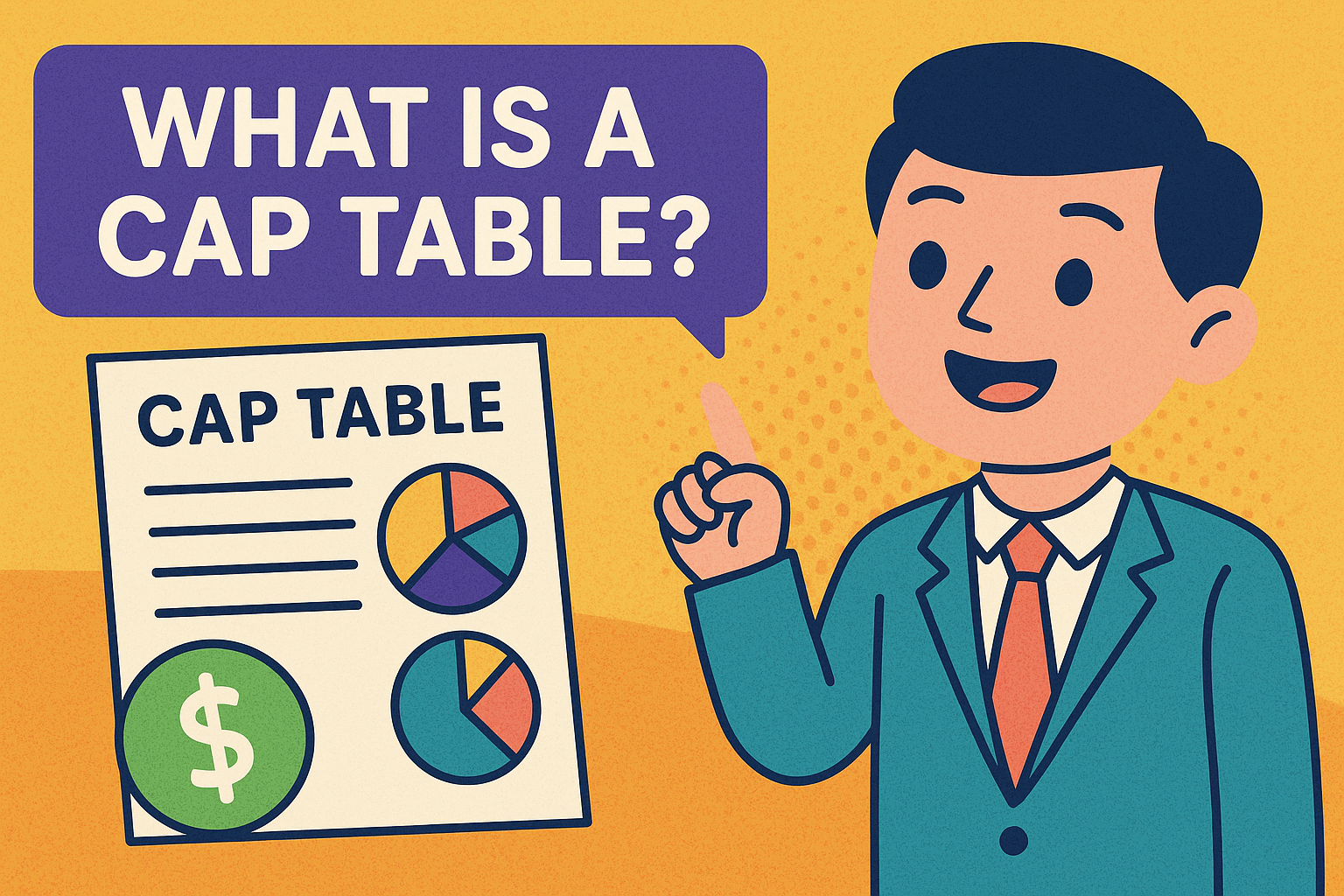Cap Table Management for Startups
Your Ultimate Equity Playbook
If you're a founder raising capital, hiring top talent, or planning an exit, mastering your cap table is non-negotiable. A well-built capitalization table (aka cap table) isn’t just an internal doc—it’s the financial blueprint investors and lawyers will scrutinize before cutting a check or approving an acquisition.
In this guide, we’ll break down everything you need to know about startup equity management—from cap table basics to tools that save you from costly mistakes. Plus, we’ll share founder-tested tips and must-have resources to keep your equity clean and investor-friendly.
🔍 What Is a Cap Table and Why It Matters
Your cap table is the single source of truth for your startup's ownership structure. It tracks:
Who owns what (founders, employees, investors, advisors)
How much equity they hold
What kind of shares or securities they own (common stock, preferred stock, SAFEs, convertible notes)
How ownership changes over time
Whether you're pitching VCs or granting employee options, a cap table is how you prove alignment, transparency, and readiness.
🧱 What Should Be in a Startup Cap Table?
A high-quality cap table includes:
1. Shareholder Breakdown
Names, roles, and contact info
Status: Founder, employee, advisor, investor
Equity class: Common vs. preferred shares
2. Equity Instruments
Shares, options, warrants, convertible notes, SAFEs
Vesting schedules for options
Details on share classes (e.g. Series A Preferred with 1x liquidation preference)
3. Ownership Percentages
Based on fully diluted shares
Post-money ownership after each raise
4. Transaction History
Funding rounds: dates, valuations, capital raised
Option grants and exercises
Share transfers or secondary sales
5. Valuation Metrics
Pre-money and post-money valuations
Current 409A valuation (needed for compliant option pricing)
6. Dilution Modeling
“What-if” scenarios for future raises
Impact of new option grants or convertible notes
7. Exit Planning
Payout waterfall for acquisition or IPO
Simulations for different exit valuations
🛠️ How to Build a Cap Table (Step-by-Step Guide)
Step 1: Gather Legal Docs
Collect:
Incorporation documents
Stock purchase agreements
SAFE/Convertible Note agreements
Option grant paperwork
Step 2: List Equity Holders and Securities
Start with founders and co-founders. Add:
Angel investors, friends/family
Advisors and early hires
Option pool allocations
Step 3: Calculate Percentages
Add up all shares (including the unallocated option pool), then divide individual ownership by the total on a fully diluted basis.
Step 4: Track Every Transaction
Document each raise, stock option grant, or share transfer with date, price per share, and board approval if applicable.
Step 5: Keep It Updated
Reconcile after:
Fundraising events
Employee departures
Secondary share sales
Board-approved option pool increases
📈 Cap Table Software vs. Spreadsheets
Excel or Google Sheets might work for idea-stage founders. But they quickly break down as complexity grows.
✅ Why Switch to Cap Table Software Early:
Error-proof math: No formulas to break
Version control: One live source of truth
Investor-ready: Share digital access, not PDFs
Compliance: Built-in 409A tracking and vesting schedules
Top Platforms:
Carta Launch – Free for early-stage startups
Pulley – Clean UI and startup-friendly plans
Cake – Great for founder-friendly compliance
💡 Best Practices for Equity & Cap Table Management
Audit regularly: Double-check with legal documents after every change
Plan ahead for dilution: Model 12–24 months in advance
Prioritize transparency: Keep key stakeholders informed
Separate by share class: Avoid confusion around rights and preferences
Align with your board: Get approvals logged early
🧠 Pro-Level Cap Table Tips Founders Wish They Knew Sooner
Include an unallocated option pool from Day 1 to avoid emergency grants
Factor in SAFEs and convertible notes early so you don’t get blindsided at your Series A
Use waterfall modeling before signing term sheets to see real outcomes
Model team dilution after a new round to keep morale high
🎓 Cap Tables for First-Time Founders, Students & Young Entrepreneurs
You don’t need to be a finance pro to master equity. Cap tables teach:
Business accountability: Everyone knows their exact stake
Fundraising prep: Be investor-ready from day one
Smart decision-making: Know how your next move affects your stake
Legal protection: Avoid future disputes over ownership
🚀 Final Take: Your Cap Table Is a Living Asset
Your cap table isn’t just a document—it’s your financial north star. It impacts hiring, fundraising, valuations, and exits. Mismanaging it can stall deals or trigger legal nightmares.
If you’re serious about scaling, treat your cap table like a product. Maintain it, update it, and use it as a decision-making engine.
📥 Next Step: Build Your Cap Table Today
Ready to take control of your equity?
✅ Download a free template
✅ Start with cap table software
✅ Keep it updated as your startup grows
Need More Support to Grow Your Startup?
If you're serious about building and scaling your startup, Pegasus Angel Accelerator offers programs designed to help early-stage founders move faster—with expert mentorship, hands-on resources, and direct connections to investors.
Whether you're launching your first venture or looking to grow an existing company, we have the tools and network to help you level up.
Disclaimer:
This article is for informational purposes only and does not constitute legal, financial, or tax advice. Always consult with a qualified attorney, accountant, or professional advisor before making decisions about incorporating your business, structuring your company, or engaging in fundraising activities.


